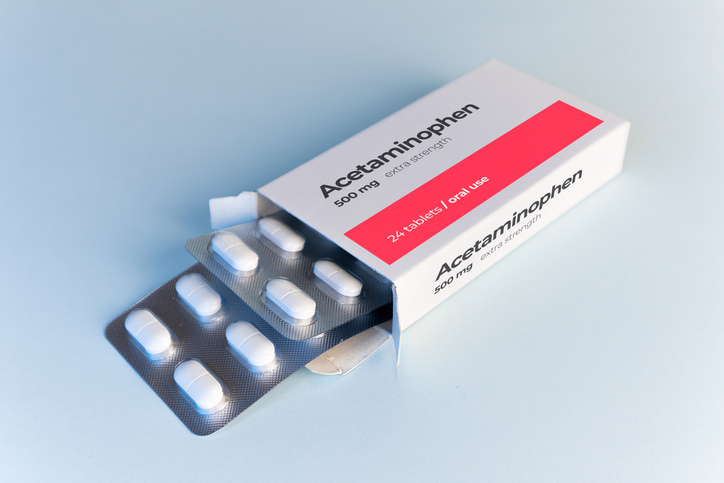
Here are the top stories recently covered by DocWire News in the Rheumatology section. In this edition, read about the use of bimekizumab in psoriatic arthritis (PsA), the seven surgeries most associated with “surprise” out-of-network medical bills, the correlation between vitamin D and back pain in postmenopausal women, and the use of a functional brace in Achilles tendon rupture.
The randomized, double-blind BE ACTIVE trial compared bimekizumab versus placebo in patients with active psoriatic arthritis. According to the findings, bimekizumab was associated with significantly improved outcomes and an acceptable safety profile. Final analysis included 206 randomized patients; 42 patients were assigned to placebo, and each active treatment group had 41 patients. Compared to the placebo group, the intervention groups had significantly better American College of Rheumatology response criteria response outcomes at week 12: 16 mg (odds ratio [OR]=4.2; 95% confidence interval [CI], 1.1–15.2; P=0.032), 160 mg (OR=8.1; 95% CI, 2.3–28.7; P=0.0012), and 160 mg (loading dose) (OR=9.7; 95% CI, 2.7–34.4; P=0.0004). Treatment-emergent adverse events (AEs) at the 12-week mark presented in 57% of placebo patients (n= 24) and 41% of patients in all of the bimekizumab groups (n = 68); most of the AEs were mild or moderate. Eight of the nine patients who sustained serious treatment-emergent AEs were in one of the bimekizumab groups. There were no recorded cases of death or inflammatory bowel disease.
One in five patients undergoing one of seven common elective surgeries will be hit with a “surprise” out-of-network medical bill, according to a retrospective analysis. The database represented 347,356 patients who, between Jan. 1, 2012, and Sept. 30, 2017, underwent common surgeries including arthroscopic meniscal repair (n=116,749) and total knee replacement (n=42,313). All surgeries were performed by an in-network surgeon and at an in-network facility. The main outcome was the proportion of care episodes with out-of-network bills, and the secondary outcome was the estimated potential balance bill correlated with out-of-network bills from each procedure. The mean age (SD) age among the patients was 48 (11) years, and two-thirds were female. Of the total study population, 20.5% of episodes (95% CI, 19.4–27.7%) had an out-of-network bill. Procedures with complications, compared to those without, were more likely to result in out-of-network bills (28% vs. 20%; risk difference=7%; 95% CI, 5.8–8.8%; P<0.001). When evaluating surgeries performed at ambulatory surgery centers with in-network primary surgeons (n=83,021), out-of-network facility bills were reported in 6.7% (95% CI, 5.8–7.7%), and out-of-network professional bills in 17.2% (95% CI, 15.7–18.8%).
A retrospective study examined how serum vitamin D concentration affects lumbar disc degeneration (LDD) and low back pain (LBP) in postmenopausal women. The researchers concluded that vitamin D deficiency was correlated with both LDD and LBP in this population. The mean age of the study population was 65.6±10.1 years; mean 25-hydroxyvitamin D (25[OH]D) concentrations were 19.38±9.21 ng/mL. Overall, 12.9% of participants had a severe vitamin D deficiency, and 12.5% had normal vitamin D status. Compared to the other groups, the severe vitamin D deficiency group had higher visual analog scale scores for LBP (P=0.002) and lower bone mineral density T scores (P=0.004). a significant relationship was observed between severe vitamin D deficiency and more severe LDD in the lumbosacral region (L4-S1, L1-S1; P<0.05), but this was not as pronounced in the upper lumbar region. Vitamin D concentration was inversely associated with disc degeneration severity (L2-L3, L4-S1, L1-S1; P<0.05). When adjusting for confounders, the following factors were correlated with higher incidence of moderate-to-severe pain: smoking, vitamin D deficiency, lack of vitamin D supplementation, high body mass index, and low bone mineral density T score.
Serial plaster casts have been the traditional treatment option for Achilles tendon rupture patients because it provides the tendon with maximum protection during the healing process. However, the immobilization over a several-week period could result in increased calf muscle atrophy, ankle joint stiffness, and gait abnormalities, as well as a greater risk for blood clots. Eligible patients were randomized 1:1 to receive either a plaster cast or functional brace for an eight-week intervention. The main outcome measure was patient-reported Achilles tendon rupture score (ATRS) after nine months. Safety was determined through tendon re-rupture incidence. At nine months post-injury, ATRS was similar between the cast (n=244; mean ATRS=74.4) and functional brace (n=259; ATRS=72.8) groups (adjusted mean difference, –1.38; 95% confidence interval [CI], –4.9–2.1; P=0.44). Tendon re-rupture rates were also similar between the plaster cast and functional brace groups (n=17/266 [6%] vs. n=13/274 [5%]; P=0.40), as were mean total health and personal social care costs (£1,181 vs. £1,078; mean between-group difference, –£103; 95% CI, –289–84]).







 © 2025 Mashup Media, LLC, a Formedics Property. All Rights Reserved.
© 2025 Mashup Media, LLC, a Formedics Property. All Rights Reserved.